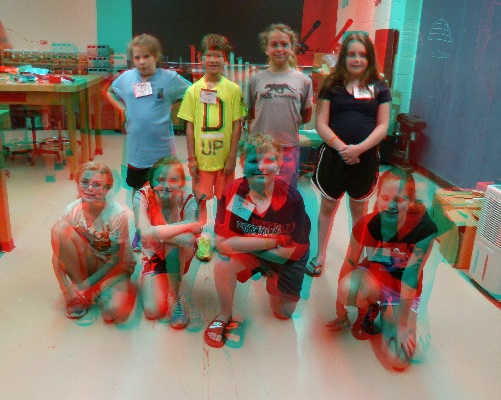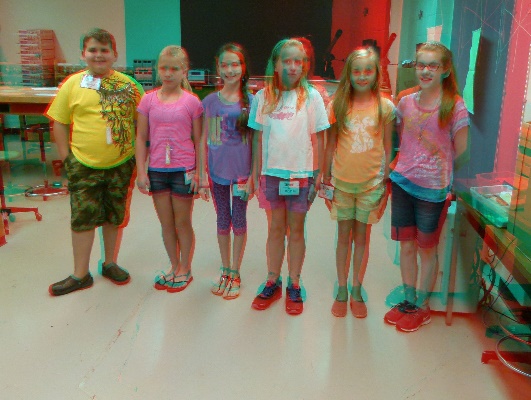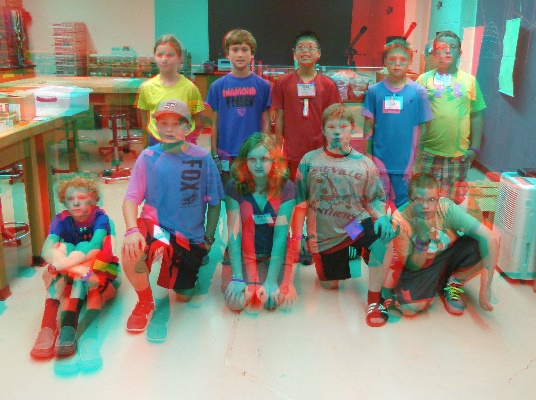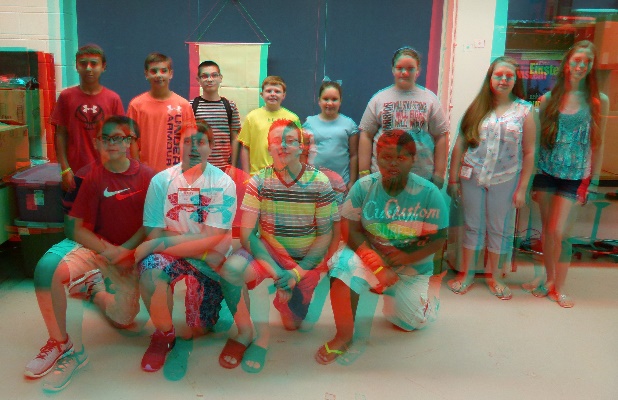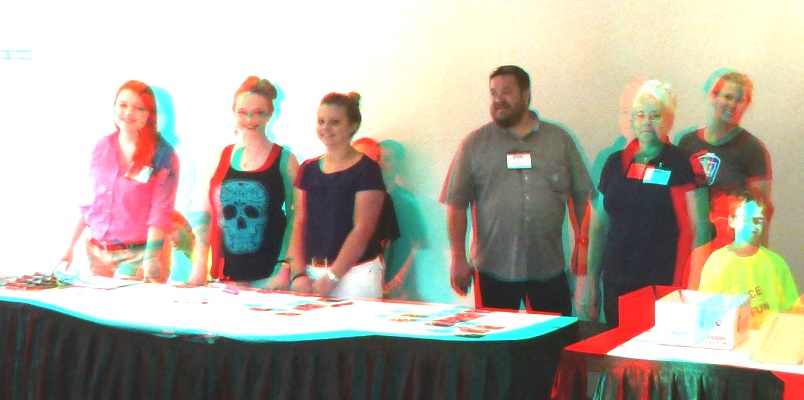Pikeville Science and Math
Camp 2014 week 1
Astronomy
Campers built portable
sundials and a solar motion demonstrator that shows the apparent path
of the sun and how it changes with date and latitude.
Biology
Chemistry
Monday campers
learned safety rules that would apply in all their classes through the
week.
They decorated a pair of safety glasses with their own choice of colors.
The glasses were for their use throughout the week and then they could
take them home.
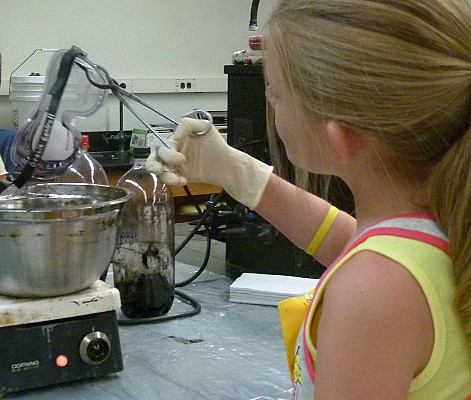
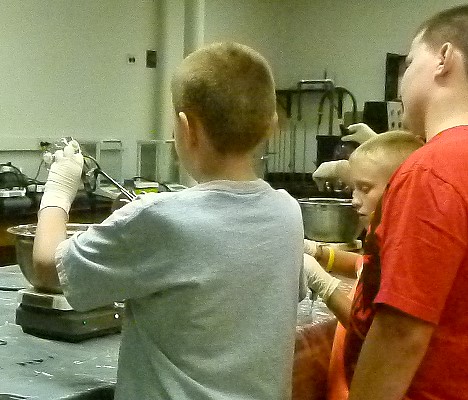
They used universal indicator to measure the pH of a variety of liquids.
And to change the color of a chameleon printed on
indicating paper.
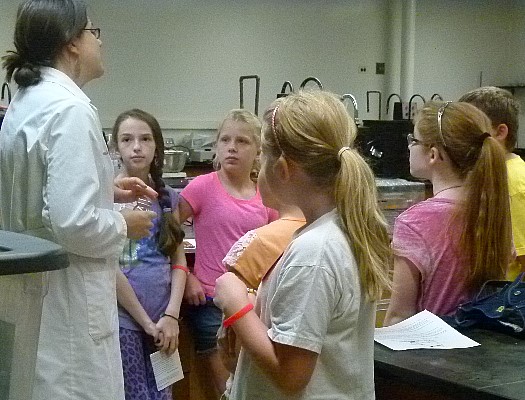
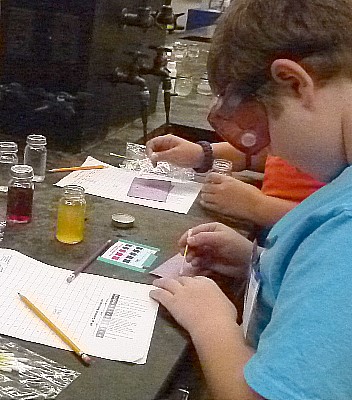
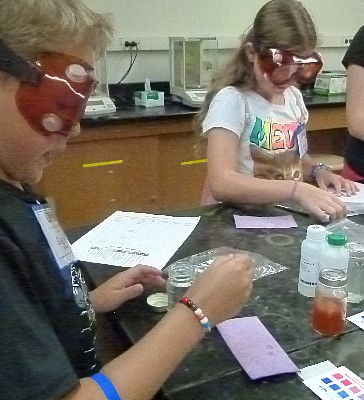
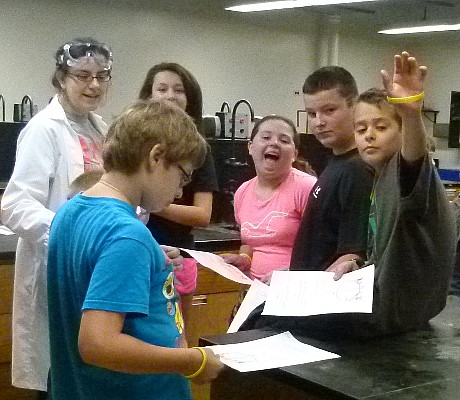
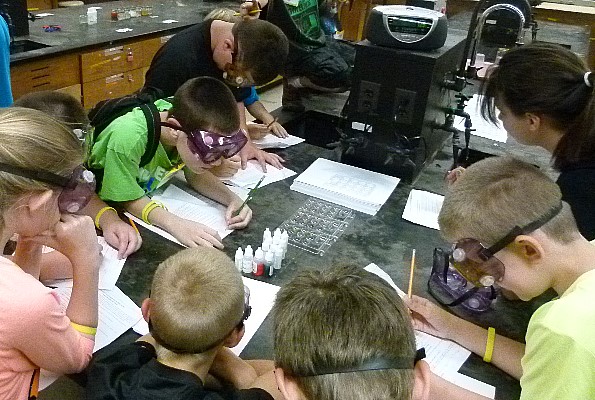
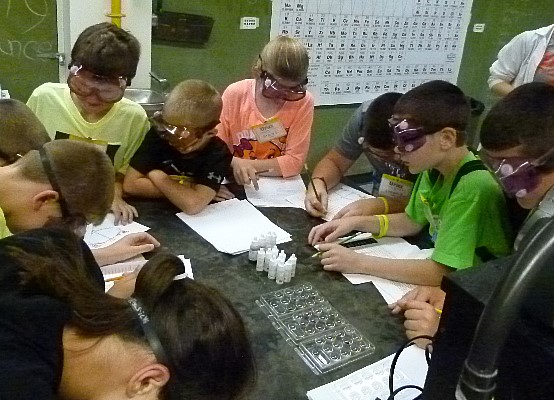
They made tiny rockets out of plastic pipettes.
Fueled them with a mix of hydrogen and oxygen, put them on a launch
pad, pressed the igniter,
and were amazed at the result.
I know at least one went 16 feet 11 inches (516 cm).
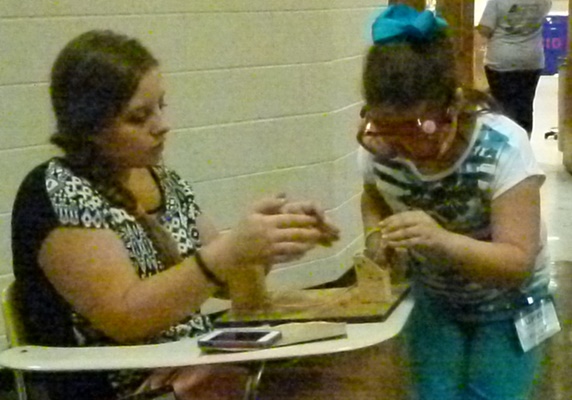

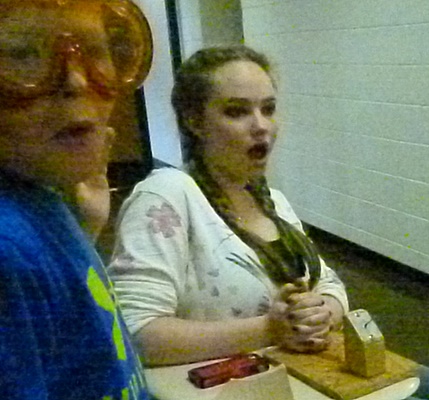
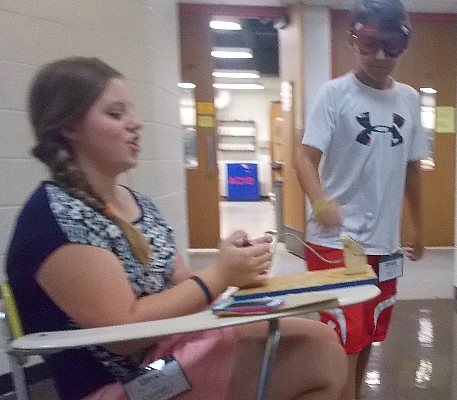
Computers
Physics
Lunch
The university's
cafeteria has a varied selection with something for everyone.
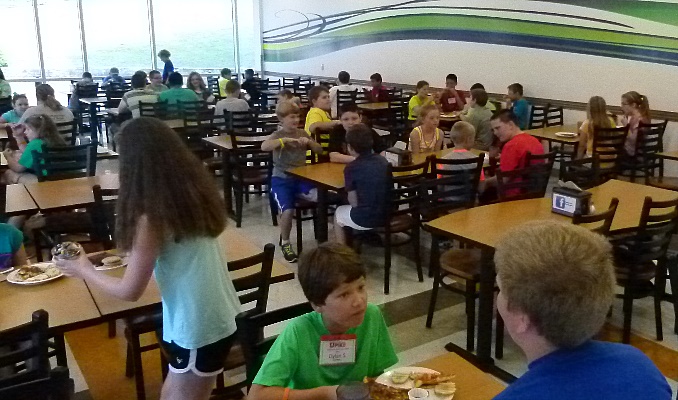
The parade of campers returning for the afternoon classes.
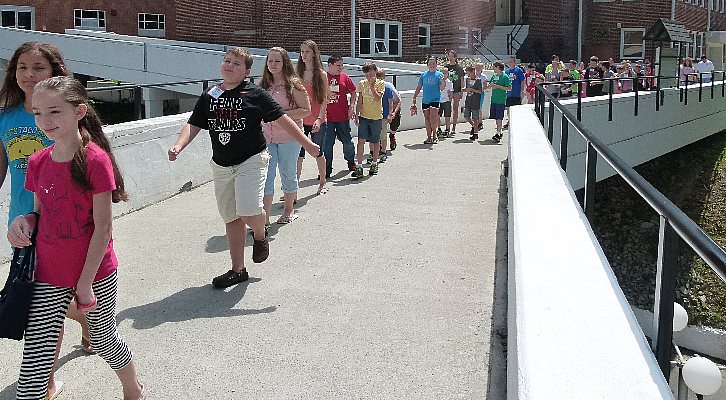
Helpers
These girls are
some of our much appreciated helpers.
They were campers in years past and have returned to assist with this
year's classes.
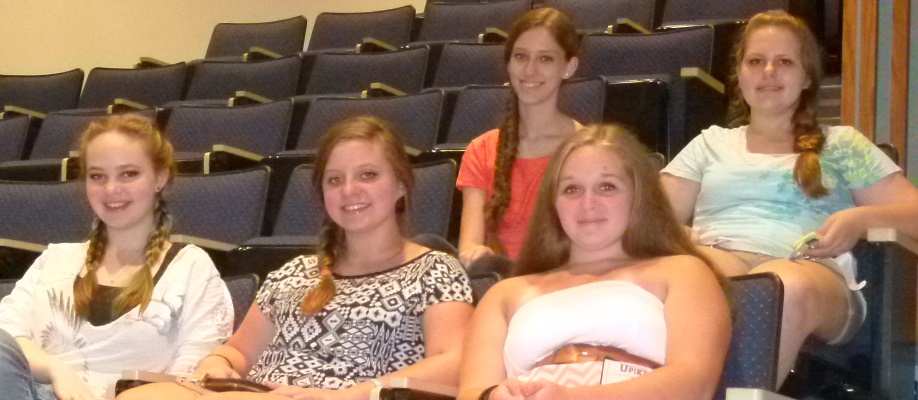
Teams competed in contests designed to
test their science, engineering and cooperative skills.
In this test one member of the team has to negotiate a maze that they
can't see using only the instructions given by their teammates.
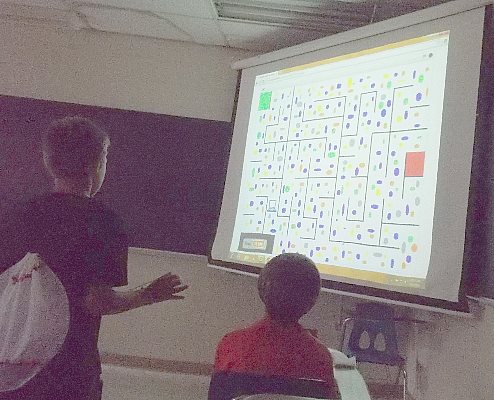
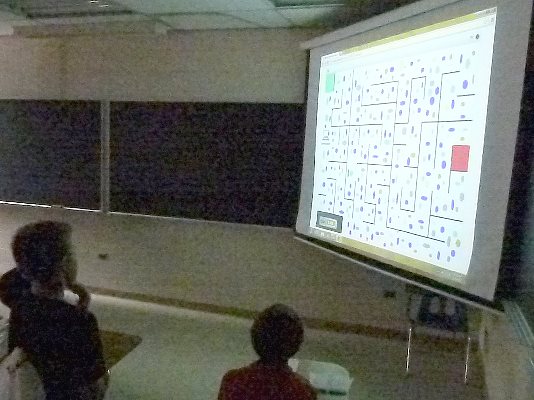
An engineering challenge.
Using a limited amount of spaghetti, tape, and string make the tallest
tower that will support a marshmallow.
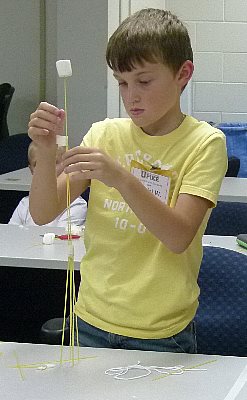
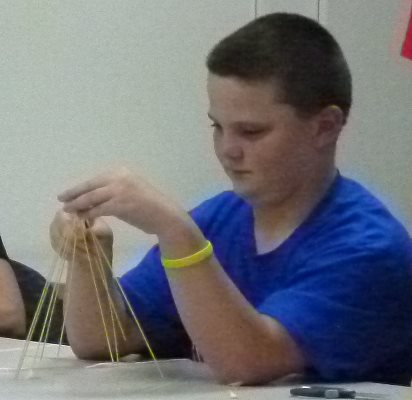
Using only the letter combinations found on the periodic table make as
many words as they can in 10 minutes.

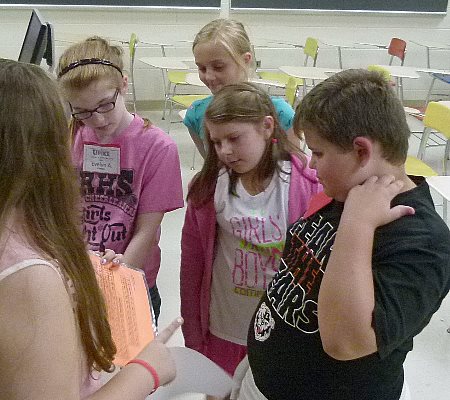
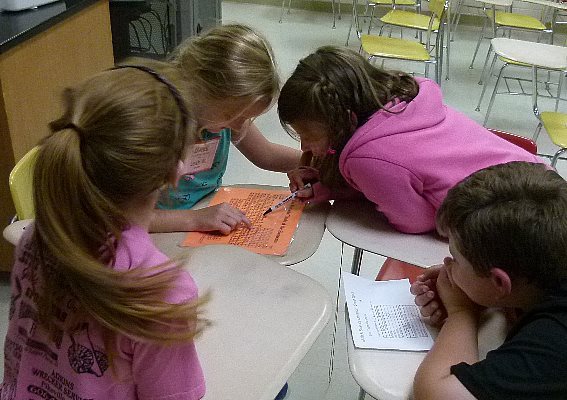
Build the highest self supporting tower possible using a a couple of
pieces of paper and a little tape.
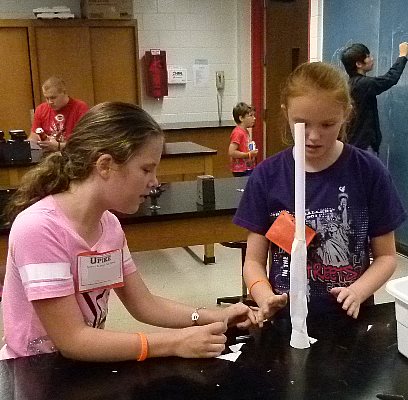
Each of the round containers contains a shape or barriers and a few BBs
that are free to rattle around..
This team is trying to figure out what is in each container.
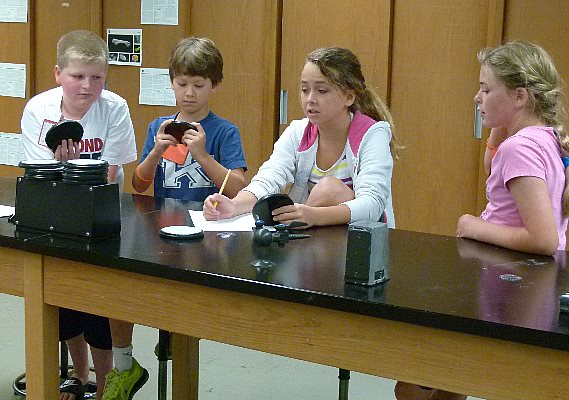
Who Wants to Win $1,000,000 is game show with science questions created
by Jefferson Lab.
Click
here
if you want to play but come back here to see more about our camp.
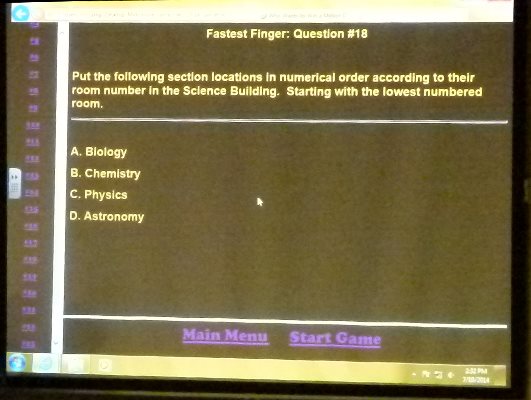

The water balloon slingshot was a ballistics problem.
Points were awarded for hitting or coming close to the target.
Our photographer managed to catch the balloons in the air on the way
toward the target.

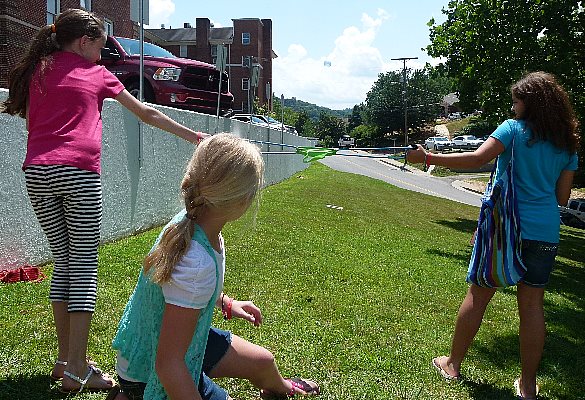
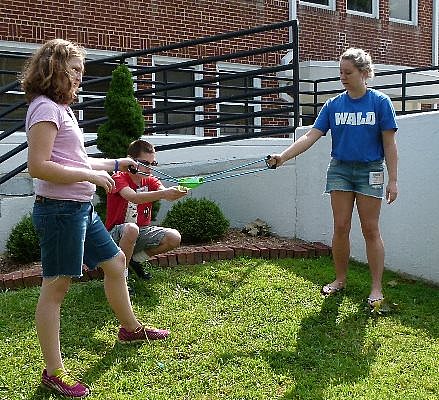
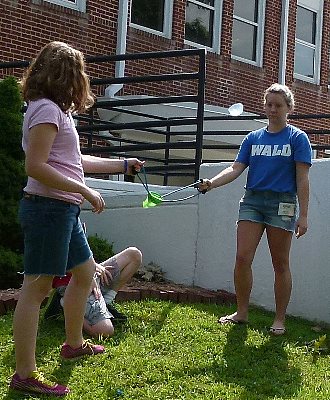
Each camper was given the specifications for a bridge that they were to
build at home.
It was to be made with one pound or less of standard spaghetti and any
kind of glue.
It had to span 16 inches, be at least 4 inches wide and able to support
a 2 by 2 inch block that was the stand-in for a vehicle crossing
it.
Each bridge was loaded by hanging a bucket that was slowly
filled with sand until the bridge failed.
Some parents came to watch the test.
There were a variety of designs.
Some sagged slowly others gave way all at once.
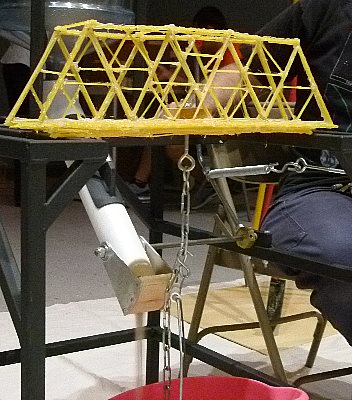
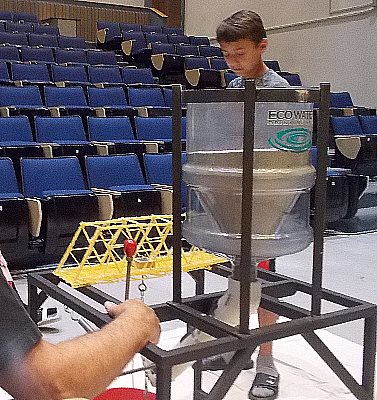
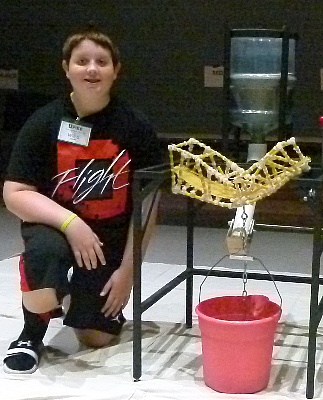
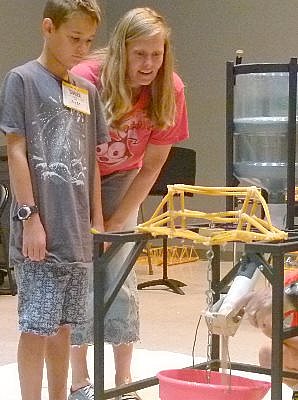
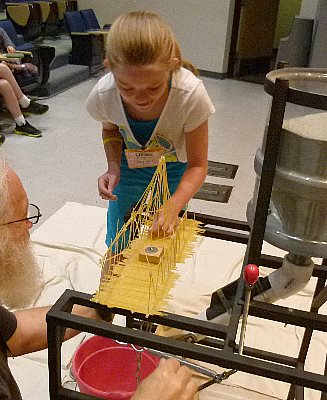
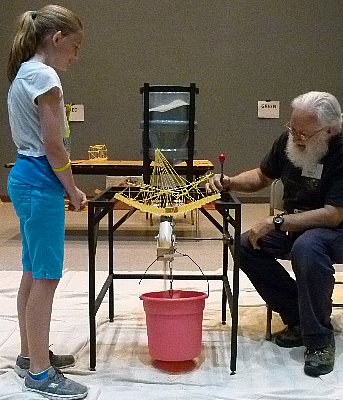


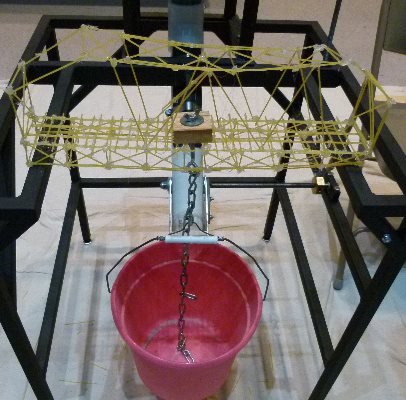
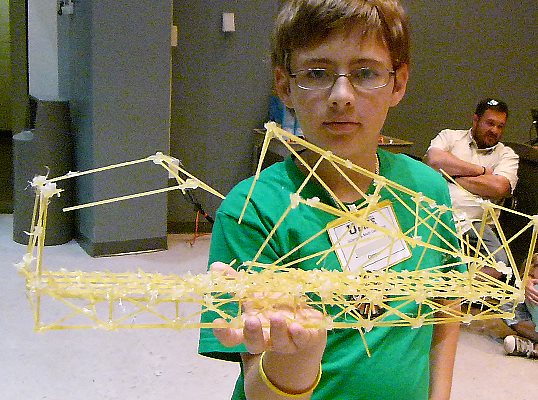
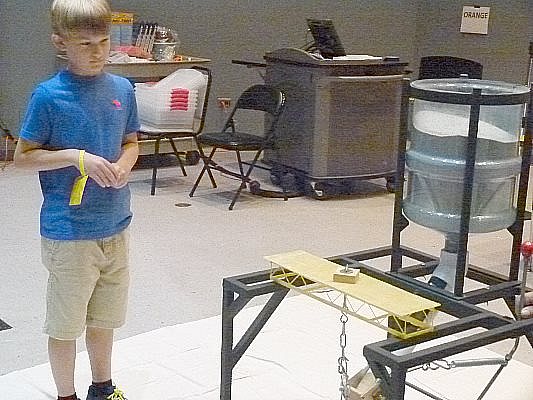
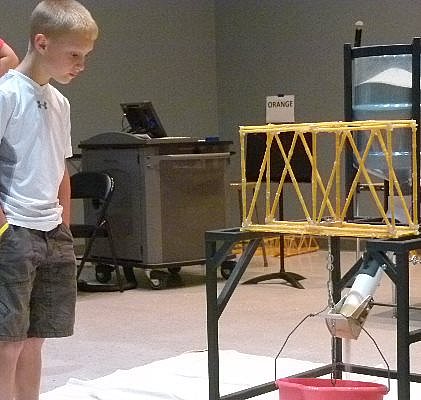
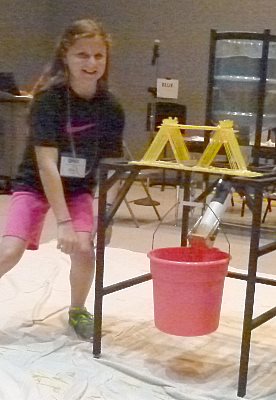
This video was shot by one of the parents.
The Winners
Go to our Science Fun
page
Go to our Travels page
Go to our Personal home
page
Go to our Community page
E-mail Nancy and Alan

The
www.mrtc.com/anvk/ web site by Alan
Kuehner is licensed under a Creative
Commons License.
Additional information and permissions beyond the scope of this license are available here.

